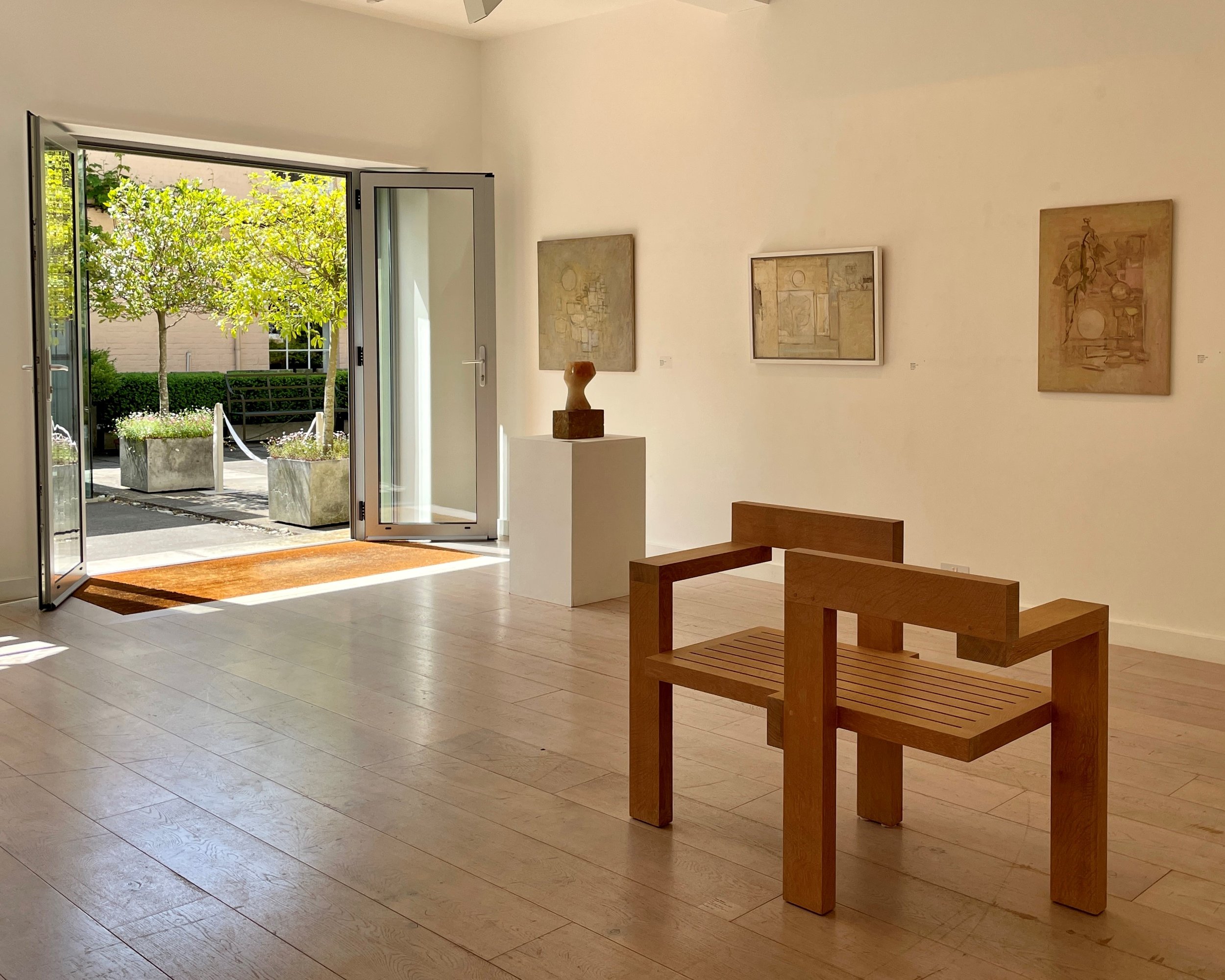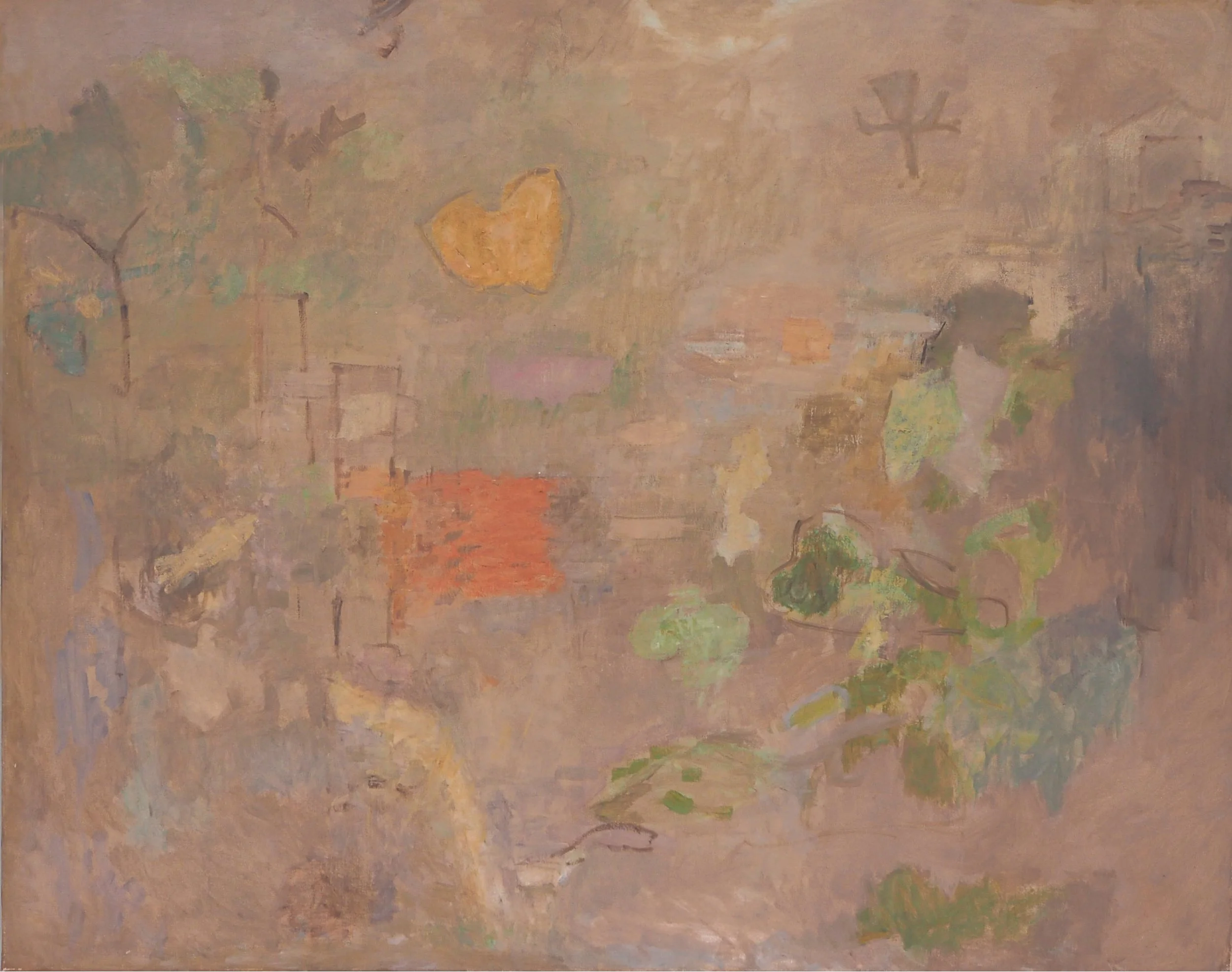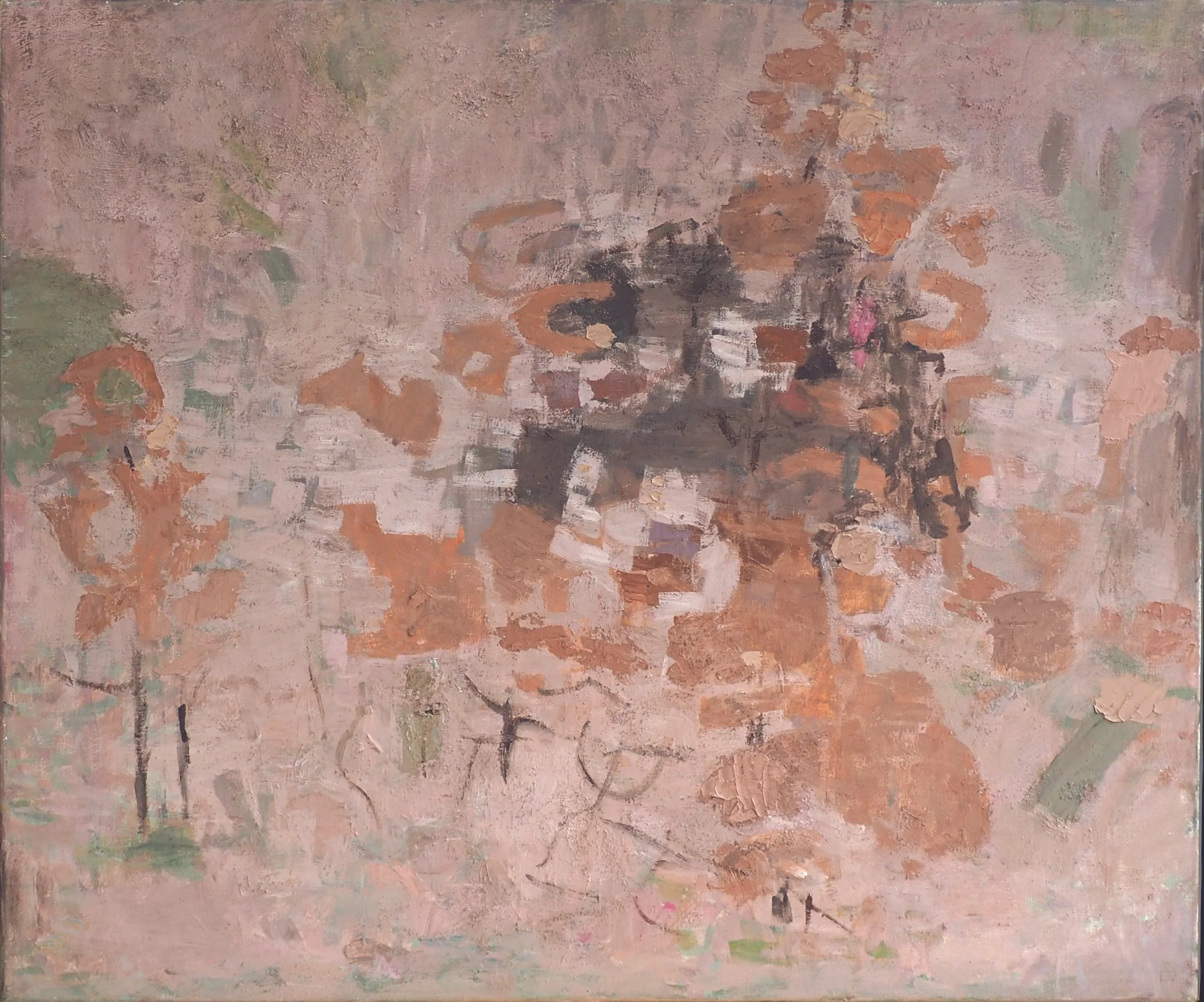
Mary Potter
A Transformative Vision
Survey of paintings from 1960 - 80
1 June 2024 - 19 January 2025
“It seems the right time to return to some of the roots of the New Art Centre. Mary Potter regularly had exhibitions with us in Sloane Street, thirteen in all. In 1964, she was asked by Bryan Robertson, Director of the Whitechapel Gallery, to have a large exhibition there, and in 1981 she was given a major exhibition at the Serpentine Gallery.
She always used a chalky surface to her pictures, which gave them their beauty and glowing qualities. Using a distilled language of colour and imagery, her paintings were much looked forward to by a very wide audience of friends and admirers, which included Bryan Robertson and Lord Clark. She was a close friend of Benjamin Britten and Peter Pears which meant that she was directly involved with the Aldeburgh Festival. They appreciated her ability to interpret her vision of the Suffolk landscape and often played music together.
We are now delighted to be able to put together this group of her work in the galleries here at the Sculpture Park, where they echo so much of the mantra of learning to look, think, and speak which is the essence of our Educational Trust, which is such an important part of Roche Court Sculpture Park, and we believe that this exhibition will give pleasure to a new generation.”
The New Art Centre at Roche Court Sculpture Park opens its summer programme with an exhibition of paintings by Mary Potter (1900-1981). This exhibition focuses on her later work, conceived after her relocation to Aldeburgh, Suffolk, in 1951. The exhibition coincides with the 75th year of the Aldeburgh Festival founded by Benjamin Britten and Peter Pears, and it remains one of the most well-known music festivals in Britain.

What a mistake to bring the heavy engines of analysis and interpretation to bear on Mary Potter’s pictures. They exist in the domain of seeing and feeling; we know that they are exactly right in the same way that we know a singer to be perfectly in tune. Yet just as the purest voice still has a human inflection, so these pure visual responses would move us less were they not also a revelation of character. They show the delicately balanced intuition and the openness of heart advocated by the masters of Zen, and in fact Mary Potter’s pictures have much in common with Chinese and Japanese ink paintings done under Zen influence. They discover in nature moments which seem to be both permanent and exceptional, and record them with, apparently, no fuss. But there is also a difference. The Chinese painters inherited a traditional language. Mary Potter has had to evolve her own. She has succeeded in creating a style which is entirely personal, and which corresponds with her moments of vision so closely that at first we are hardly aware of it. Nothing is forced, or done for effect. There is never a cliché and never a false note. This kind of delicate economy comes naturally in water-colours, where the medium demands elimination on its own terms. But a light, allusive oil painting can easily look thin and inconclusive, and technically it is Mary Potter’s great achievement to have preserved in oils the feeling of delight which is so endearing in her small watercolours and given it greater permanence and structure. She has even succeeded in painting on the large scale which, for some mysterious reason, has seemed a necessity during the last fifteen years. Perhaps the reason is that her innocent eye is accompanied by a keen critical sense, which she applies unsparingly to her own work, so that the most spontaneous looking picture is the result of severe trials. Like Maggie Teyte singing Debussy’s songs, or Virginia Woolf’s essays in the Common Reader, lightness and ease are the result of professional discipline; but this is the last thing we think of when we share these enchanting moments of heightened perception.
This appreciation of Mary Potter’s work was written by Sir Kenneth Clark (later Lord Clark) for her Whitechapel Art Gallery exhibition in 1964 and reprinted in the catalogue to her retrospective exhibition at the Serpentine Gallery in 1981.












